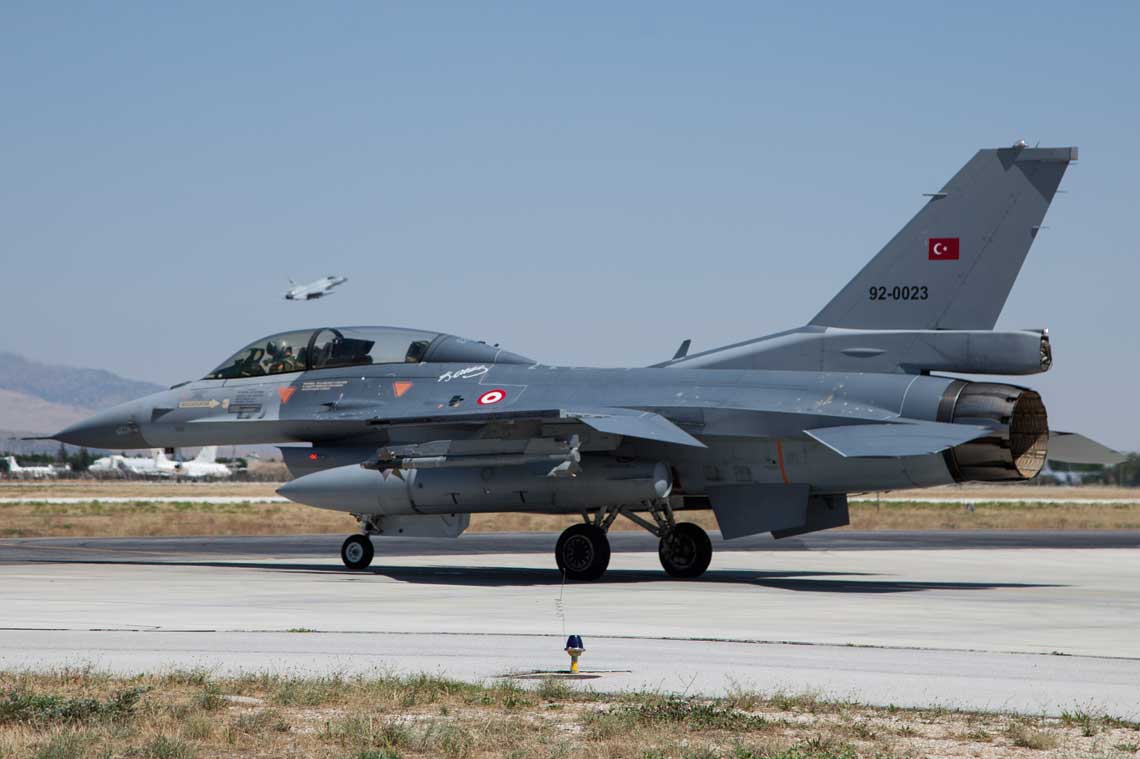
Exercise Anatolian Eagle 2019

After the exercise was not held for two years, this year representatives from the United States, Pakistan, Jordan, Italy, Qatar and NATO's international air arm took part.
From June 17 to 28, Turkey hosted the Anatolian Eagle 2019 multinational aviation exercise. The Turkish Air Force 3rd Main Konya Air Base became the host country.
During these twelve days, the Turkish Air Force transferred a contingent of about 600 people participating in the exercises, and the rest of the Turkish Armed Forces - another 450 people. In total, Turkish aircraft performed about 400 training flights. According to the Anatolian Eagle 2019 scenario, air strike groups faced all possible ground air defense systems of all branches of the armed forces. Therefore, countermeasures came not only from the Turkish Air Force, but also from the Turkish ground forces and naval forces. All the contingents participating in the exercises struck at a wide range of targets, ranging from typical battlefield targets such as tanks to frigates at sea, air bases and other targets of great importance to the enemy.
After the exercise was not held for two years, this year representatives from the United States, Pakistan, Jordan, Italy, Qatar and NATO's international air arm took part. Azerbaijan has sent observers to the Anatolian Eagle 2019. The most notable participant was the Pakistan Air Force. In previous years, F-16 multirole combat aircraft were sent to the exercises, but this year they have given way to the JF-17 Thunder. Another significant participant in the exercises was the Jordanian Air Force, which involved three F-16 combat aircraft. Another regular participant was the Italian Air Force, which produced AMX attack aircraft for this edition.
Although F-35A Lightning II multi-role combat aircraft were expected to be sighted at the Konya base, the USAF presence was limited to six F-15E Strike Eagle fighter-bombers from Lakenheath, UK.
Situational awareness has been greatly enhanced by measures such as the NATO unit's E-3A radar surveillance aircraft (Konya is the forward base selected for NATO's early warning and command force) or the NATO unit's Boeing 737 AEW&C radar surveillance aircraft. Turkish military aviation. Both provided real-time control of the airspace, allowing fighters to target targets and determine the order in which they should be dealt with.
These aircraft were considered extremely important, therefore, in addition to using them in exercises, they were also trained to protect them from enemy attacks. During these twelve days, two missions (Eagle 1 and Eagle 2) flew each day, one during the day and one during the day, with up to 60 aircraft taking off each time.
The exercise also involved other types of Turkish Air Force aircraft, as well as two C-17A Globemaster III and C-130J Hercules transport aircraft of the Qatar Air Force. They carried out transportation in the theater of operations, dropped cargo and paratroopers, including, according to the data of the airborne radar (during these sorties, they were covered by fighters), combat search and rescue operations, trained in timely departure and quick response, as well as assistance in the fight against ground targets and assistance in dynamic target selection.